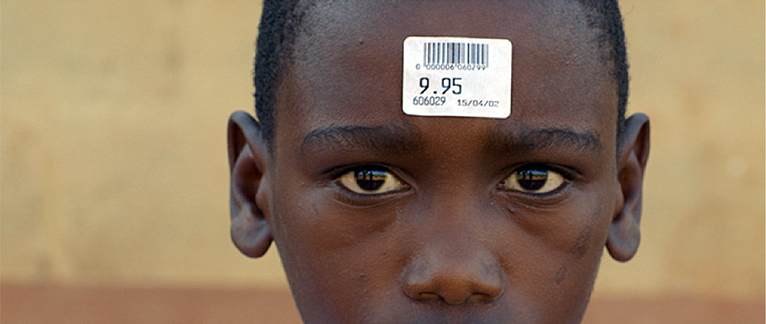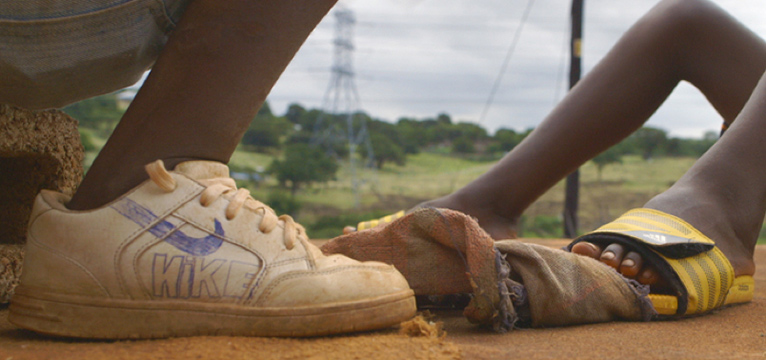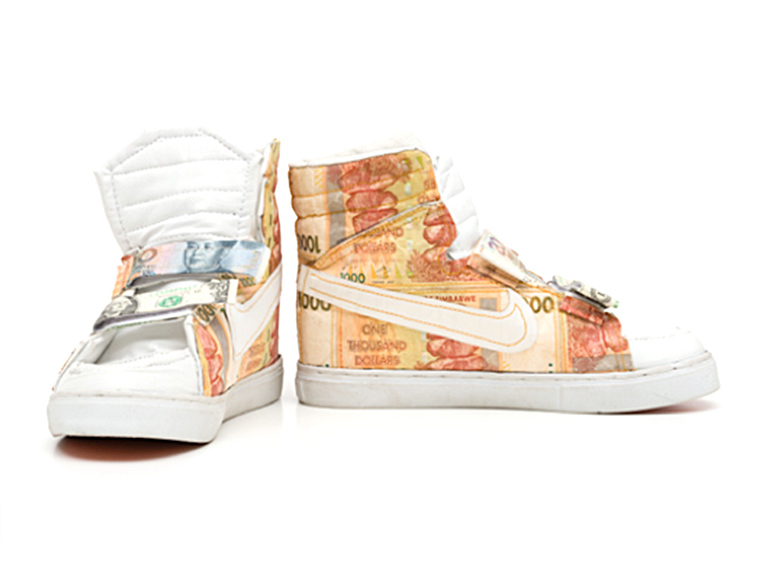The "failed" counterfeit challenges the secure core of value itself, making the legitimacy of the “true” object suspect.
“Just hear how true it rings. Almost the same sound as the real one. One would swear it was gold.” The words are spoken by Bernard, one of the many characters in André Gide’s novel, The Counterfeiters (or Les Faux-Monnayeurs, as the original 1925 French title has it). Bernard is showing his companions a counterfeit coin he purchased that morning after it nearly duped him. He reports that even though it couldn’t be worth more than two sous—as it is only a bit of gold painted on glass—he happily paid five francs for it. Why, we might wonder, would he give up his very worthy five francs (50 times the worth of two sous) for a worthless fake?
The scene uses the explicit example of a counterfeit coin to condense themes explored more subtly through other characters and scenes. Ostensibly exposing the hypocrisies of the French bourgeoisie in the 1920s, the metaphor of the counterfeit operates as lever to let loose a host of anxieties: How can we tell the innocuous double from the dangerously duplicitous? How can we craft an authentic life amid so many phonies? The title of the novel, after all, does not warn about faux money (counterfeits); rather, it warns about the people that tender them. Counterfeiters, it counsels, tend to mirror the counterfeit objects they traffic in. By contrast, Bernard sees the object for what it truly is, opening a novel perspective. Rather than conveying a monetary value, the counterfeit has the capacity to recalibrate value by bringing a measure of skepticism to the familial and societal institutions that purport to secure it. In such instances, the counterfeit exploits the charms of imitation, but it also introduces another logic of value altogether. It sets new events into motion.
Gide’s novel implicitly probes how it might be possible to exit from false circuits of value when they are intertwined with intimate relationships involving family, friends, lovers, and even one’s self. He only partially answers the question in the shape of the character Edouard, an author also writing a novel called The Counterfeiters. One of the most innovative aspects of the novel is the way it uses Edouard to revel in the ways that authorship is an art of fabrication. Once exposed, Gide can then explore the curious vicissitudes of the counterfeit: as long as it passes, the counterfeit holds its own against real money, or any other object it imitates; once it fails, it exposes the diffident kinship between illicit copy and authentic original. Such “failures” trouble the hidden mechanics of value production itself. By blurring the line between objects made legitimately or illegitimately, Gide offers another view of counterfeiters: those who are faking are still making, and their objects may open the possibility for making another way, making otherwise.
The word counterfeit derives from the Latin words for “making against” (Latin contra- ‘in opposition’ + facere ‘make’). In monetary terms, the counterfeit is typically considered an attack on the governmental, financial, corporate or other institutions that secure value. It is because of the trust invested in these institutions (or so their own logic goes) that it is possible to communicate confidence through monetary transactions. But when the contract between money and the value industry breaks, a different kind of value is not only possible, but possibly necessary. It is here that counterfeiters render new perspectives.
Jacques Derrida also recognizes the potential of the counterfeit to unravel the security of exchange, to trouble the balance sheet of giving and receiving. “Counterfeit money is never, as such, counterfeit money,” he suggests. “As soon as it is what it is, recognized as such, it ceases to act as and to be worth counterfeit money.” The counterfeit inserts doubt into circulation; once exposed, the fake shakes the faith that structures monetary and other social exchanges. Derrida concludes: “It obligates you first of all to wonder what money is: true money, false money, the falsely true and the truly false—and non-money which is neither true nor false, and so forth.” Whereas the successful counterfeit communicates value illegitimately, the failed counterfeit is neither truly money nor truly a counterfeit—it is simply glass painted with gold, or whatever. The failed counterfeit challenges the secure core of value itself: the legitimacy of the “true” object becomes suspect once the counterfeit exposed as such brings doubt in to play. The fissures in the value industry are then made available for reworking.
A remarkable transvaluation occurs when money remains real while the trust invested in institutions of value falters. Using real money against itself to comment on unstable political-economic institutions, artist Gerald Machona, like Gide, creates objects and characters that upend established relations among money, value, and social institutions. Based in Cape Town, South Africa, Machona’s artwork reflects on issues of migration, mobility, economy, and belonging by employing a provocative material: decommissioned currency from his home country of Zimbabwe.
In June 2015, Bloomberg News reported that one US dollar ($1) was worth 35 quadrillion Zimbabwean dollars (Z$35,000,000,000,000,000). The declining value of the Zimbabwean dollar is partially attributable to years of hyperinflation that began in the 1990s and peaked around 2008. In 2009, a multi-currency system was introduced. Most government transactions are now conducted in US dollars, but daily transactions may also be conducted in the South African rand, Botswana pula, British pound sterling, Indian rupee, euro, Chinese yuan, Japanese yen, and Australian dollar. This system hasn’t restored trust in Zimbabwe’s monetary systems, though; there is persistent concern among some vendors about the ease of counterfeiting foreign currency that remains unfamiliar to many people, even as such counterfeiting practices remain unverified.
In this atmosphere, the art of the counterfeit would be wasted on the Zim dollar, as worthless as the real. If money is essentially worthless, Machona’s work suggests, then let’s see what else it can make. The piece If you travel east far enough you end up in the west and if you go far enough west you end up in the east engages expectations about counterfeit goods but disengages from its conventional attachments to status and social mobility. Toying with the viewer’s willingness to engage in the myths of social mobility associated with the “real” value of name brand goods, the shoe-sculpture recalls Bernard in The Counterfeiters and provokes a new question: if one can make his own shoes from something like two sous, why would he pay five francs for them?
The unworn shoes also contradict the movement evoked in the title, conveying the immobility of money. Evoking tensions between movement and immobility, If you travel… conjures the seams of connectivity—or disconnection—that link people and goods to global cycles of production and consumption. It asks about the money—and costs—associated with moving people and objects across the globe, from east to west and west to east. It challenges received ideas about middle-class aspirations and the presumption that one should want money because it allows for travel, or movement more generally. Bearing no signs of travel, the shoes posit the idea that money may get one nowhere.
Making something new out of real, if “worthless,” money, Machona effectively uses money against itself to craft a notion of value that is otherwise. Skeptical viewers may protest such a value accrues via the art industry. However, making such sculptural somethings out of monetary nothings involves a different kind of doubling, where the question is no longer what is real and what is fake, but how denominations of space and belonging might be redefined. This question comes through forcefully in pieces like Ndiri Cross Border Trader (I am a Cross Border Trader), which shows a man in a suit and tie, his head sculpted by bills. Machona reports that this character, like others in the series, refers to an occupation typical of many African immigrants living in South Africa.
The image calls to mind a Wall Street trader—or a similar someone who easily passes money and commodities across borders. There seems to be a face looking back through the bills, but it is impossible to tell: what would such a gaze suggest about what is real or fake? The image is provocative, but there is one note that rings false. Cross border traders are typically women, and they do not don suits when they undertake long and dangerous trips to South Africa to buy goods that are not available in Zimbabwe. Some will bring the goods back to Zim to sell, but most will navigate a series of informal travel and financial networks, transacting in multiple languages and crisscrossing the countries of Southern Africa (Angola, Mozambique, Zambia, Namibia, Malawi), selling their goods before returning home. Many cross border traders encounter gender-specific forms of harassment and risk bribes, thefts, and violence in order to make the money that supports rent, school fees for their children, and other household expenses. From this perspective, the suit and the money covering the face mask the true identity of cross border traders. Unmasked, Ndiri Cross Border Trader would reveal a different body on the line and call attention to a tension embodied in the suit (rather than clothes more typical of cross border traders). Nonetheless, the image condenses the many complex ways that migration, like trading, is often an ongoing condition of making a home in twenty-first century global capitalism.
In other pieces as well, home is a place marked by mobility and uncertainty. In Ndiri Afronaut (I am an Afronaut) Machona carefully stitches Zim dollars into a space suit to ask about what kinds of life are sustained, or sustainable, in such spaces. The viewer is drawn into a consideration of how other inflationary environments—national, cultural, and economical—support the lives within. The suit also calls to mind people who flee Zimbabwe for other spaces—not outer space, but the uncertain spaces of neighboring countries.
Ndiri Afronaut came to life as part of a 2014 exhibit called Vabvakure (People from Far Away). Using art as a retort to anti-immigrant sentiment, Machona playfully approaches the idea that he could be an “alien invader” wandering into the “outer space” of his home country. But the sculpture also turns this notion around to reflect on the idea of “space invaders.” Whereas astronauts have special suits to help them survive in the hostile atmosphere of outer space; and more terrestrial explorers, like the Englishman, Cecil Rhodes, donned outfits tailored by the accouterments of colonialism and “founded” colonies like Rhodesia (present-day Zimbabwe); the wears of the Afronaut repose issues of space and belonging in the form of fashion, resonate with allusions to Afrofuturism, traditional African textiles, and the high fashion of Alexander McQueen.
Like Gide’s The Counterfeiters, which casts a character into the role of author to embed skepticism about the fictions that sustain the middle class (revealing their confusion over making and faking), Machona’s Vabvakure explores the forging of new social and interpersonal relations amid circuits of exchange made against the normal operations of the value industry. Both inspire a counter-intuitive approach to thinking about counterfeits, pointing to how they might rework the logic of value. A similar approach is evident in Simon Wood’s short documentary film, Orbis. The documentary follows some of the residents of Umlazi, one of South Africa’s largest townships, as they interact with one of Africa’s busiest ports, located 12 kilometers away in Durban.
Orbis: the title cues the viewer to attend to how people and objects circulate within an endless import-export loop. The film primarily follows one man who breaks down appliances discarded by wealthier neighbors to sell the metal scraps to recyclers; a woman who devotes scraps of her time off work to sew a swimsuit for a girl eager to swim, and Siyabonga Makhandayi, who makes his own new things—a soccer ball out of a condom, his own Nikes. All the vignettes in the film depict fragments of life forged from materials at hand, much of which is evidence of the waste of middle-class life. Recycling is presented as a motif of twenty-first century capitalism: the unseasonal cycles through which goods are cast off and re-made into the newest new thing is shown to underwrite the cyclical reproduction of economic inequality.
The opening and closing scenes of the film show Siyabonga affixing price tags to items in his yard as if he were going to have a tag sale; but he is just playing. In the final scene of the film he sticks one of the tags to his own forehead then slowly looks up at the filmmakers (who are reflected in his eyes).

If Gide’s novel proposes the counterfeit as a device through which insincerity can be culled away from a more authentic life, Orbis puts a finer point on it, teasing out another possible relationship between object and maker of value. The false hook in the image is the price tag if one hears in it a protest against the commodification of life or a siren call for paying full price. The price tag is what deceives because it perpetuates false value, confusing worth and cost, as if value were found there. Rather, the shot suggests that value is neither in the object nor in the person. As the price tag has no intrinsic relationship to value, it provokes a consideration of how the viewer encounters this image.
It is perhaps possible to see in this image only Siyabonga looking, which “forgets” that he is looking at (and perhaps performing for) a camera, and the filmmakers. The image is potentially duplicitous, because it is almost possible to overlook that way it tasks the viewer to ask, how does one really appear in the eyes of another?—a question that takes up reflection as a thought rather than simply a theme. Attending to the reflection in Siyabonga’s eyes brings the machinery of reproduction (the camera) back into view. It moves the viewer to contemplate how complex social relations are constituted below the “bottom line” of false value (represented by the price tag). Contemplating reflection as a mode of thought recalls that this is not an image of reality that preexists its composition in the camera lens; rather, it is produced as what Roland Barthes calls a reality effect, which approximates what he calls a residue. The residue indicates something has happened while also acknowledging the variegated contingencies in which that something is made. Put simply, this proposal means teasing out the delicate ways that documentary film also revels in the art of fabrication.

The way Siyabonga forges newness out of oldness is cast in sharper tones in an earlier scene, which shows him, ink pen in hand, sketching a Nike swoosh on his white sneakers. He fills it in, saying: “I first saw this sign on my uncle’s sneakers. I like Nike because I know how to draw it. And because it’s famous. When I think of ‘brand,’ it’s like when you have something new. You say it’s ‘brand new.’”
Siyabonga knows that they are “famous,” but his desire for his own Nikes derives more immediately from his admiration for his uncle and his pride in being able to draw. Implicitly, he recalls how the expression “brand new” initially referred to something newly cast from fire, as with a branding iron. Now, of course, the expression is thoroughly absorbed by the commodity—what Karl Marx described as commodity fetishism (the way products seem magically to appear on the shelf, erasing their origins in relations of labor). Commodity fetishism appears as a relationship between things, not people. The deception of the “brand new” thing is that it claims to communicate a certain notion of selfhood—as if the authenticity of the brand communicates an authenticity of self. Siyabonga’s remake diverges from this logic.
Within the value industry of twenty-first-century capitalism, trademarked goods proclaim their superior quality and safety. Like the morally inflated discourse around copyright infringement conjured through the term “piracy,” owners of trademarks condemn all unauthorized copies as theft. But it is instructive to reflect on why one might willingly go with the fake. Perhaps those who covet the counterfeits could never pay the asking price of the “original.” But perhaps, in addition to being different in degree, it is also different in kind.
Cultural and legal scholar, Rosemary Coombe, argues that it is politically necessary to engage dialogically with products marked by the signs of intellectual property (©, ®, ™). With this in mind, Siyabonga’s Nikes might be understood not merely as an imitation but rather a kind of translation that references the “original” but grafts it to a new symbolic context. More than making an argument about changing the economic conditions so that Siyabonga can have a “real” pair of Nikes, his actions might more productively be seen as part of a critical dialogic practice that points to grey zones within the global economy where the logic of value can be diverted toward other effects. Like Machona, Siyabonga hand makes his own Nikes; and like Machona’s shoe sculptures (If you travel…), Siyabonga’s shoes express forms of value—affective associations with his uncle’s shoes, the pleasure of creativity, artistry as a process of self-making, etc.—that counteract the reflective logic of mimicry.
Should one want “real” counterfeits, there are plenty. They often appear as shiny surfaces that mirror “real” value, which remains unchecked. The exposed counterfeit swerves away from this economic valuation of true-false. Bernard marvels at how his counterfeit coin almost rings true; it is also possible to hear how it sounds out alternative possibilities, forging otherwise.
